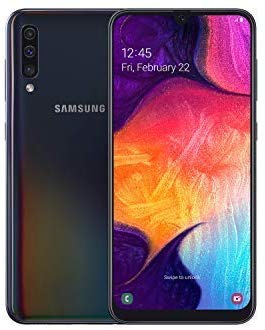Samsung Galaxy S10e Review

For the past couple of years, Samsung has typically had two flagship S series smartphones at launch — a regular and a Plus version. This year, the company introduced a third variant called the Galaxy S10e. Going by the US pricing, the Galaxy S10e seems to be aimed directly at the iPhone XR (Review). In India, thanks to Samsung's local manufacturing, we're able to get it closer to the dollar value while the iPhone XR comes in at a steep premium.
At Rs. 55,900, the Galaxy S10e₹ 55,900 is a good Rs. 10,000 cheaper than the standard Galaxy S10₹ 61,749, and there's really no other 2019 Android flagship in India at this price right now. The Galaxy S10e has also been receiving rave reviews on the Internet, so it's finally time for us to see if it actually lives up to the hype.
Samsung Galaxy S10e design
The Galaxy S10e is the smallest and lightest of the three new Galaxy S10 models at 150g. It's 0.1mm thicker than the others, which is practically impossible to tell, even when placed alongside the other two. What we really love is the size of this phone. It feels incredibly comfortable to hold and the rounded edges aren't abrasive on the skin. The aluminium and glass back is a bit slippery when used with one hand, and this phone does attract fingerprints easily.
Even though it feels sturdy, the aluminium frame will pick up permanent scuffs if you drop this phone. For instance, we were crouching to take some photos of a flower at one point, and the phone slipped from our hand, from less than waist height and tumbled onto a tiled floor. The glass remained intact but the top of the frame bore the brunt of the impact, leaving behind a permanent mark.
 The Samsung Galaxy S10e₹ 55,900 has Gorilla Glass 5 on the front and back
The Samsung Galaxy S10e₹ 55,900 has Gorilla Glass 5 on the front and back
The Galaxy S10e has a Bixby button just like its siblings, which can be programmed to trigger other functions too. You can set the double-press or single-press actions to either launch an app or trigger a Bixby Routine, but launching the Bixby assistant has to be one of the other choices.
Unlike the ultrasonic fingerprint sensors in the more premium Galaxy S10 models, the Galaxy S10e has a standard capacitive one integrated into its power button on the right. It's highly sensitive, and even a quick touch is enough to unlock the phone. You can also enable gestures for easier access to the notification shade. While it works well, we do think the placement of the power button is a bit too high up, and we found it to be a little hard to reach when holding the phone normally.
The Samsung Galaxy S10e has a 5.8-inch full-HD+ Dynamic AMOLED display. The resolution is lower than that of the Galaxy S10 and Galaxy S10+ (Review) but you still get a pretty dense pixel count of 438ppi. Thankfully, Samsung hasn't stripped the HDR 10+ certification for the display, so you can still enjoy high dynamic range colours in compatible videos. The default colour profile can make colours look a bit too saturated but you can switch to the ‘Natural' colour profile if you prefer.
One of the big design differences with the Galaxy S10e is the lack of a curved display edges on the left and right side. Instead, the display is flat. Another little difference is that the Galaxy S10e has slightly thicker bezels on the sides and the top compared to the other two, although this didn't really bother us.
 The Samsung Galaxy S10e's hole-punch can be masked with some clever wallpapers
The Samsung Galaxy S10e's hole-punch can be masked with some clever wallpapers
One area where Samsung has cut some corners is the level of scratch protection for the glass. The Galaxy S10e has Gorilla Glass 5 on the front and back, whereas its bigger siblings have Gorilla Glass 6 on the front and Gorilla Glass 5 on the back. While Gorilla Glass 5 still is certified to withstand scratches and small drops, the newer version on the other two Galaxy S10 models should offer better shatter resistance. You also get a screen guard pre-applied, which we found annoying since the edges feel rough when you swipe in from either side of the display.
At the back of the phone, we noticed some more cutbacks compared to other Galaxy S10 models. The Galaxy S10e ditches the telephoto camera so you only get the main dual-aperture, 12-megapixel sensor and the 16-megapixel ultra-wide angle one. These are the exact same sensors found in the other two models, though. Another thing that's missing is the heart-rate sensor, which in our books is not a big loss.
The Samsung Galaxy S10e is only available in Prism Black and Prism White in India. The bundled accessories include an AKG-tuned headset, USB-OTG Type-C to Type-A adapter, fast charger, data cable, SIM eject tool and warranty information. What's interesting is that you get a much better looking plastic case with this model, compared to a transparent, hard-plastic shell with the other two.
Samsung Galaxy S10e specifications and features
Even though this is the most affordable phone in Samsung's flagship lineup, there's nothing low-end about its specifications. In India, the Galaxy S10e ships with the 8nm Exynos 9820 octa-core SoC, but there's only one variant here, with 6GB of RAM and 128GB of storage. Internationally, an option with 256GB storage and 8GB of RAM is also available.
Other specifications that are standard across all Galaxy S10 models include a hybrid dual-SIM slot, Gigabit LTE and dual 4G VoLTE support, Wi-Fi 802.11ax (Wi-Fi 6), Bluetooth 5, NFC, support for four satellite navigation systems, and USB Type-C.
The Galaxy S10e also features AKG-tuned stereo speakers with Dolby Atmos, an IP68 certification for dust and water resistance, and a whole bunch of sensors.
Samsung's new One UI 1.1 is based on Android 9 Pie. The security patch on our review unit was dated February 2019. We've recently reviewed a number of Samsung phones with One UI, so it didn't take long to get accustomed to the interface.
The Samsung Galaxy S10e runs on One UI, which is based on Android 9 Pie
There are a whole bunch of optional gestures and shortcuts, and Apps Edge lets you add shortcuts for commonly used apps to a bar that can be accessed from the home screen with a simple swipe gesture. You can get rid of the standard Android navigation buttons in favour of gestures, which are not bad. Google's Digital Wellbeing feature can help you keep tabs on your app usage habits. We've covered the software of the Galaxy S10+ in great detail in our full review and gaming review and it's identical here, so do check those stories out.
The Galaxy S10e isn't free from spammy notifications cluttering up your notification shade, but there is a way to minimise disruption by unchecking some of the ‘terms and conditions' boxes when setting up the phone and using Samsung's stock apps and features like Bixby for the first time. Despite all these precautions, we were still getting prompts from the My Galaxy app before we even opened it. The number of notifications wasn't huge, but we wish there was a way to disable it completely.
Samsung Galaxy S10e performance, cameras and battery life
The Galaxy S10e is the ideal size for comfortable single-handed use. Reaching the notification shade is still a bit of a stretch but not by much. Despite the compact body, you don't sacrifice on the size of the display either. The hole-punch for the front camera isn't too distracting after a day of using this phone, and you can have some fun with it with clever wallpapers designed to mask it. You can mask the entire top of the display if you like, but then you lose out on some screen space.
The fingerprint sensor works well but since it's capacitive, there are limitations, such as it won't work if your fingers are wet or greasy. You don't have to press the power button as a simple touch is enough to unlock the phone, which is nice. Samsung has gotten rid of the iris scanner that previous Galaxy S flagship models had, due to the lack of space in the hole-punch area.
Even though there's face recognition, it's not as good as Apple's Face ID as the phone relies on just the selfie camera for authentication. It works well, and is triggered as soon as you raise the phone towards your face. In low-light, the screen bumps up the brightness briefly to illuminate your face. However, face recognition did not work for us when we had sunglasses on.










Most Visited
It’s always been hard to reconcile the dreams of portability with power in a gaming laptop.
Devices built on Nvidia's Tegra X-1 mobile processor are at risk of attack from a flaw security r
Google has introduced new methods, an updated user interface and other changes through which 2-st